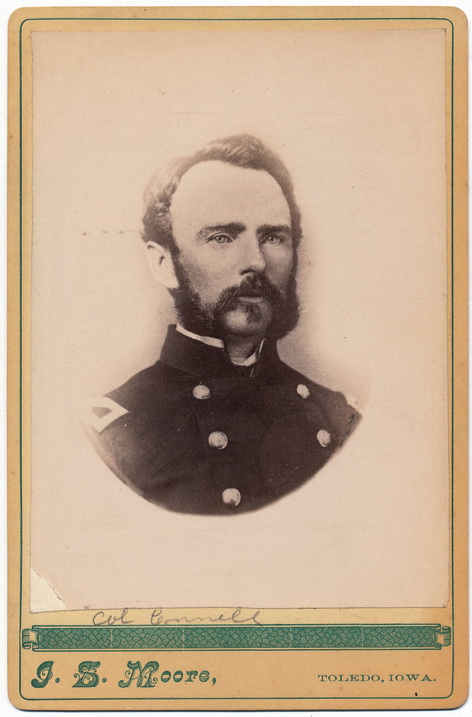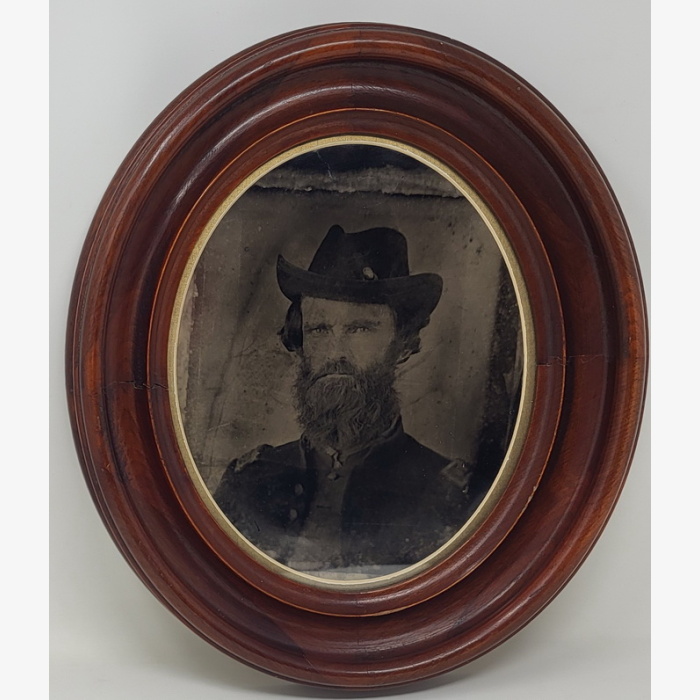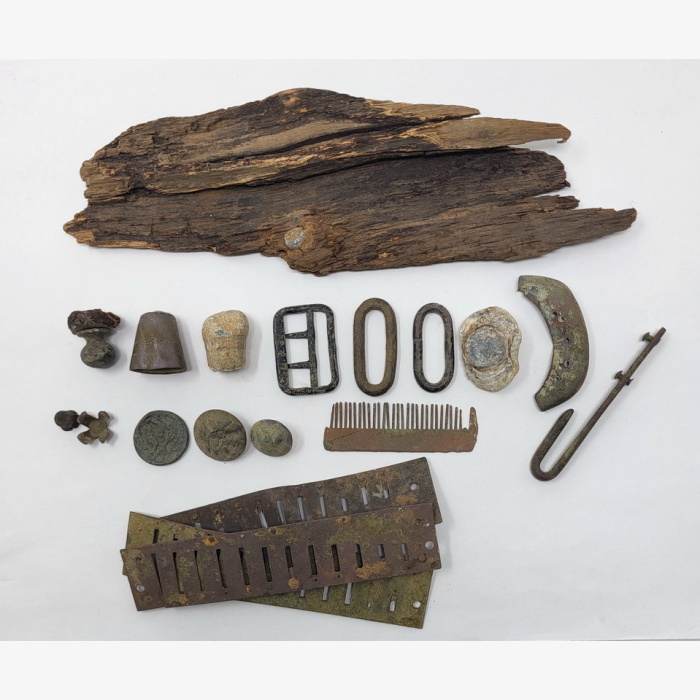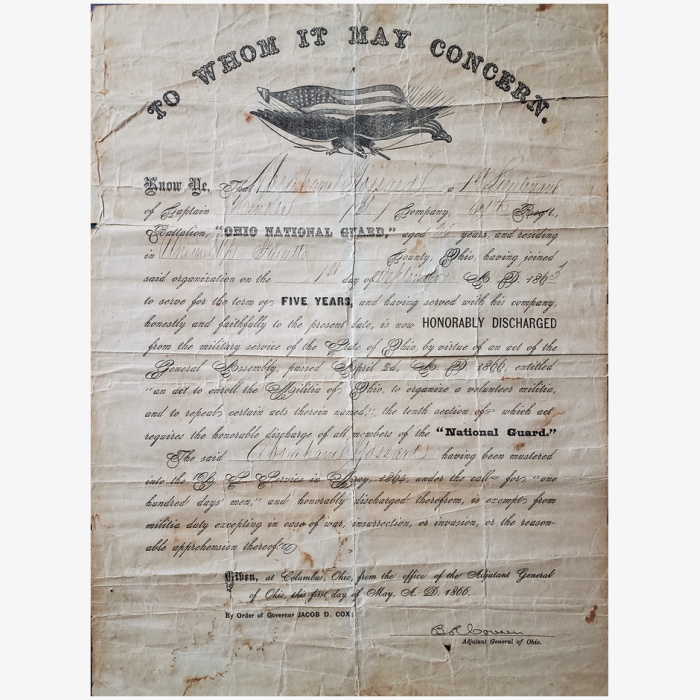Description
Cabinet card view of Colonel John Connell. The former Scottish immigrant would settle in Toledo, Iowa in 1852. Ten years later, he would take a commission as lieutenant colonel of the 28th Iowa Volunteer Infantry. The regiment would take part in numerous engagements and movements throughout 1863 and 1864. Port Gibson, Champions Hill and both the siege of Vicksburg and Jackson, Mississippi among others during the year of 1863. Connell would receive a promotion to colonel in March of that year and would led the regiment in the battles of Port Gibson, Champion’s Hill, and against the rebel works at Vicksburg. In March of 1864, the Red River Campaign would begin and the regiment would play a significant role in the first battle of that campaign at Sabine Cross Roads. In Captain Thomas Dillin’s official report of the battle, he spoke of Connell. “Colonel John Connell had his horse shot under him early in the action but he remained on the field, cheering and urging his men to the last, and, it was supposed, fell mortally wounded while retreating from the field. Loved most by those who knew him best, his loss to the regiment is irreparable. He possessed not only the respect but the affection of his men.”. Connell had in fact survived the battle although barely. His wounding is noted in the publication “Iowa Colonels and Regiments”. “While he was falling back with his regiment they came to a battery, blocked up in the road, and stopping they tried to extricate it, but the enemy pressed them so closely that nearly all the men retired, leaving the colonel still at work. He did not observe his men when they left, but looking up the instant after saw them retiring and prepared to follow. Before starting he turned round and stooping looked through the brush to see how near the enemy had approached: that instant a shot struck him. As he stooped, his left hand was resting on his hip which threw his elbow up. The ball struck him above the elbow and passed down through the joint, fracturing it severely. He then tried to run but became so faint he was obliged to rest, when the enemy coming up captured him”. He would lose the arm but retain his life. Connell would remain in a southern prison until June when he would be paroled and rejoined his men at Carrollton, Louisiana. “The colonel stepped from the cars, while an armless sleeve hanging from his left shoulder but too plainly suggested the past. He was introduced to the regiment by Major Meyer, and was received by the regiment with an expression of that unmistakable affection and enthusiasm with which soldiers always regard a true man.”. The loss of his arm effectively sidelined Connell for the remainder of the war until his discharge in March, 1865. Lieutenant Colonel B. W. Wilson would mention Connell in his official report in September, 1864. “In appearance, Colonel Connell is intelligent and unassuming, and his countenance wears a frank and modest expression which makes one like him. He has a good form, sandy hair, and a florid complexion, and, I may add, just the sort of temperament to meet a rebel. Indeed, our red-headed men, throughout the war, have been the most successful soldiers.”. Wonderful portrait of this exceptional officer. It is marked out of his home town of Toledo, Iowa.




